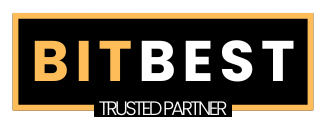Evaluating ICOs: Identifying Promising Projects vs. Red Flags
Introduction
Initial Coin Offerings (ICOs) have transformed the fundraising landscape, offering startups an innovative way to secure capital. While some ICOs have led to groundbreaking projects, others have been marred by scams and failed ventures. For investors, distinguishing between promising ICOs and potential red flags is crucial. In this guide, we’ll explore key evaluation criteria to help you make informed investment decisions.
Understanding ICOs: A Brief Overview
An ICO is a crowdfunding method where new cryptocurrency projects raise capital by selling their native tokens. Investors purchase these tokens with the expectation that their value will increase over time. Unlike traditional fundraising, ICOs bypass intermediaries, allowing direct participation. However, the lack of regulation also makes them a hotbed for fraudulent schemes.
Key Factors in Evaluating Promising ICOs
1. The Whitepaper: The Foundation of Any ICO
A well-structured whitepaper is the first sign of a legitimate project. It should clearly outline:
- Project goals and vision – What problem does it solve?
- Tokenomics – How will the token be used within the ecosystem?
- Roadmap – What is the timeline for development?
- Team and Advisors – Who is behind the project?
- Technical details – Is there a working prototype or MVP?
Red flags include vague descriptions, excessive jargon, or missing technical information. If a whitepaper lacks clarity, it’s often a sign of an underdeveloped or deceptive project.
2. The Team: Who’s Behind the Project?
The credibility of an ICO heavily depends on the expertise of its team. Research the team members by checking their LinkedIn profiles and previous experience in blockchain and fintech.
What to look for:
- A team with a strong track record in relevant industries
- Transparent LinkedIn profiles and active professional engagement
- Reputable advisors with industry expertise
Red flags:
- Anonymous or unverifiable team members
- Lack of experience in blockchain or technology
- Advisors who seem disconnected from the project
3. Token Utility and Economics
A project’s token must have a clear purpose within its ecosystem. Evaluate whether the token is essential for the project’s functionality or merely a fundraising tool.
Strong tokenomics include:
- A well-defined use case
- A fair token distribution plan
- Supply and demand mechanisms that create value
Red flags:
- No real utility beyond speculation
- A disproportionately large allocation to the team and founders
- Lack of transparency in token distribution
4. The Roadmap and Development Progress
A credible project will have a well-defined roadmap outlining key milestones. Verify whether the project has met previous targets and if there is a working prototype or Minimum Viable Product (MVP).
Indicators of a strong roadmap:
- Achievable and clear development goals
- A functional demo or MVP
- A history of meeting deadlines
Red flags:
- Overambitious promises with no real progress
- Constant delays in development
- No MVP or prototype after significant funding
5. Community Engagement and Transparency
A strong community presence often reflects an engaged and transparent project team. Check discussions on platforms like Telegram, Discord, and Twitter.
Signs of a healthy community:
- Active and positive discussions
- Team members responding to questions
- Regular updates and transparent communication
Red flags:
- Lack of engagement from the team
- Censorship of negative comments
- Bots and fake followers inflating social media presence
6. Smart Contract Security and Audit Reports
A well-audited smart contract minimizes the risk of vulnerabilities. Look for projects that have undergone third-party security audits and published their findings.
What to check:
- A reputable third-party audit (e.g., Certik, OpenZeppelin)
- Publicly accessible audit reports
Red flags:
- No mention of a smart contract audit
- Code vulnerabilities that remain unaddressed
7. Partnerships and Industry Collaborations
Legitimate projects often establish partnerships with reputable companies or blockchain organizations. Strong partnerships enhance credibility and improve the project’s chances of success.
Good indicators:
- Collaborations with recognized blockchain firms
- Strategic partnerships that align with the project’s goals
Red flags:
- False claims of partnerships (verify through official sources)
- No external support from reputable entities
8. Regulatory Compliance
Regulatory scrutiny has increased in the cryptocurrency space. A promising ICO should comply with relevant regulations, such as Know Your Customer (KYC) and Anti-Money Laundering (AML) policies.
Positive signs:
- Compliance with KYC and AML regulations
- Legal documentation available for review
Red flags:
- No mention of regulatory compliance
- Operating in jurisdictions known for crypto scams
Common ICO Red Flags to Avoid
Even with promising aspects, some projects may still exhibit red flags that investors should avoid:
- Guaranteed high returns: No investment is risk-free; beware of unrealistic promises.
- Unclear use case: If the project lacks a real-world application, it may be a money grab.
- Plagiarized whitepaper: Some scams copy existing whitepapers; use tools to check for originality.
- Anonymous team: A lack of transparency often signals a fraudulent project.
- High-pressure sales tactics: Be wary of limited-time offers pushing you to invest quickly.
Conclusion: Investing Wisely in ICOs
Investing in ICOs can be lucrative, but it requires due diligence. By carefully evaluating whitepapers, team credentials, tokenomics, and community engagement, you can separate legitimate projects from scams. Remember, if an ICO seems too good to be true, it probably is.
Looking for a secure way to invest in cryptocurrency projects? Check out our recommended platforms here.


 Bitcoin
Bitcoin  Ethereum
Ethereum  Tether
Tether  Solana
Solana  USDC
USDC  Lido Staked Ether
Lido Staked Ether  Dogecoin
Dogecoin  TRON
TRON  Cardano
Cardano  Bitcoin Cash
Bitcoin Cash  Toncoin
Toncoin